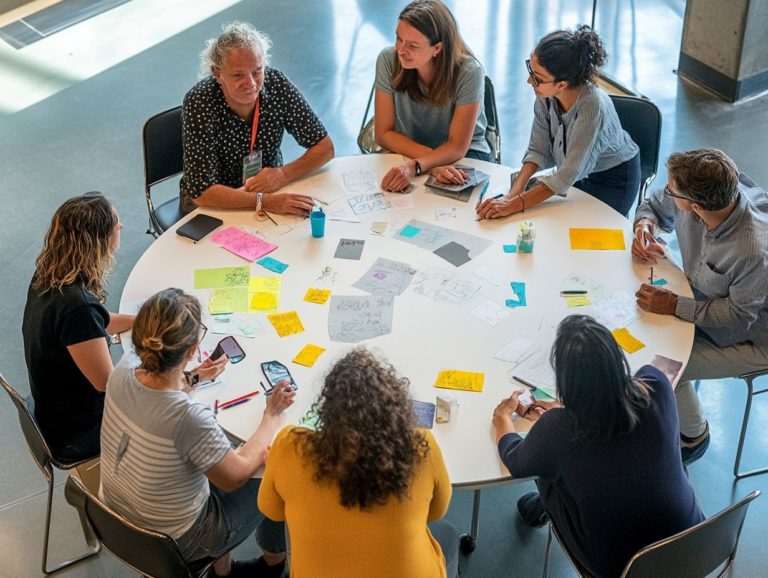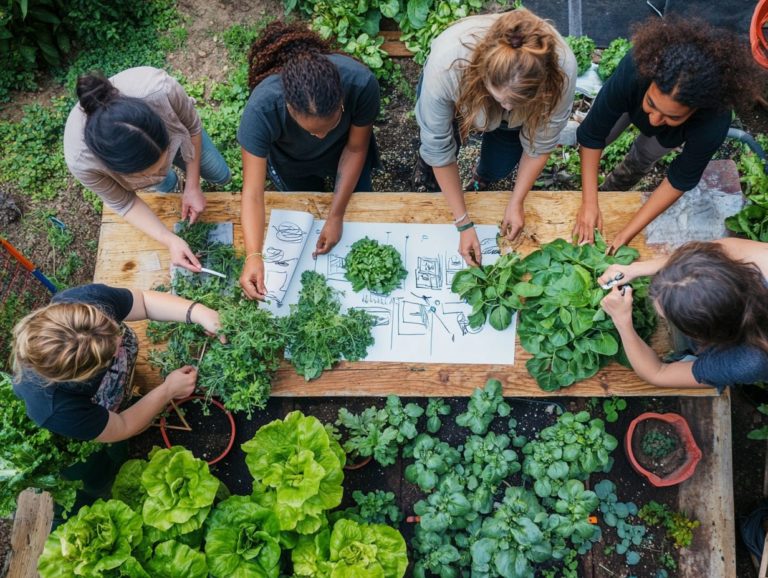Top 10 Resources for Learning Permaculture Design
Permaculture design presents a sustainable way to thrive alongside nature, and a wealth of resources is at your fingertips to dive into this practice. Join the permaculture movement today!
Whether you re just starting out or aiming to sharpen your skills, this article showcases the top 10 resources, including insightful books, engaging online courses, and hands-on local workshops. Don t miss out on these valuable resources!
You ll learn to implement permaculture principles in diverse settings, grasp its essential ethics, and find meaningful ways to connect with the permaculture community. Get ready to enrich your understanding!
Contents
- Key Takeaways:
- 1. Books on Permaculture Principles and Design
- 2. Online Courses and Webinars
- 3. Permaculture Design Certification Programs
- 4. Permaculture Blogs and Websites
- 5. Podcasts and Videos
- 6. Local Permaculture Groups and Workshops
- 7. Permaculture Design Manuals and Guides
- 8. Permaculture Design Conferences and Events
- 9. Permaculture Design Software and Apps
- 10. Permaculture Design Consultations and Mentoring
- What Is Permaculture and Why Is It Important?
- Frequently Asked Questions
- What are the top 10 resources for learning permaculture design?
- How can I learn more about the principles of permaculture design and sustainable practices?
- What is the best way to gain hands-on experience with permaculture design and ecological systems?
- Are there free resources to learn permaculture design and sustainable living?
- What should I consider when choosing a permaculture design course?
- Can I use permaculture design principles in my urban or suburban property?
Key Takeaways:
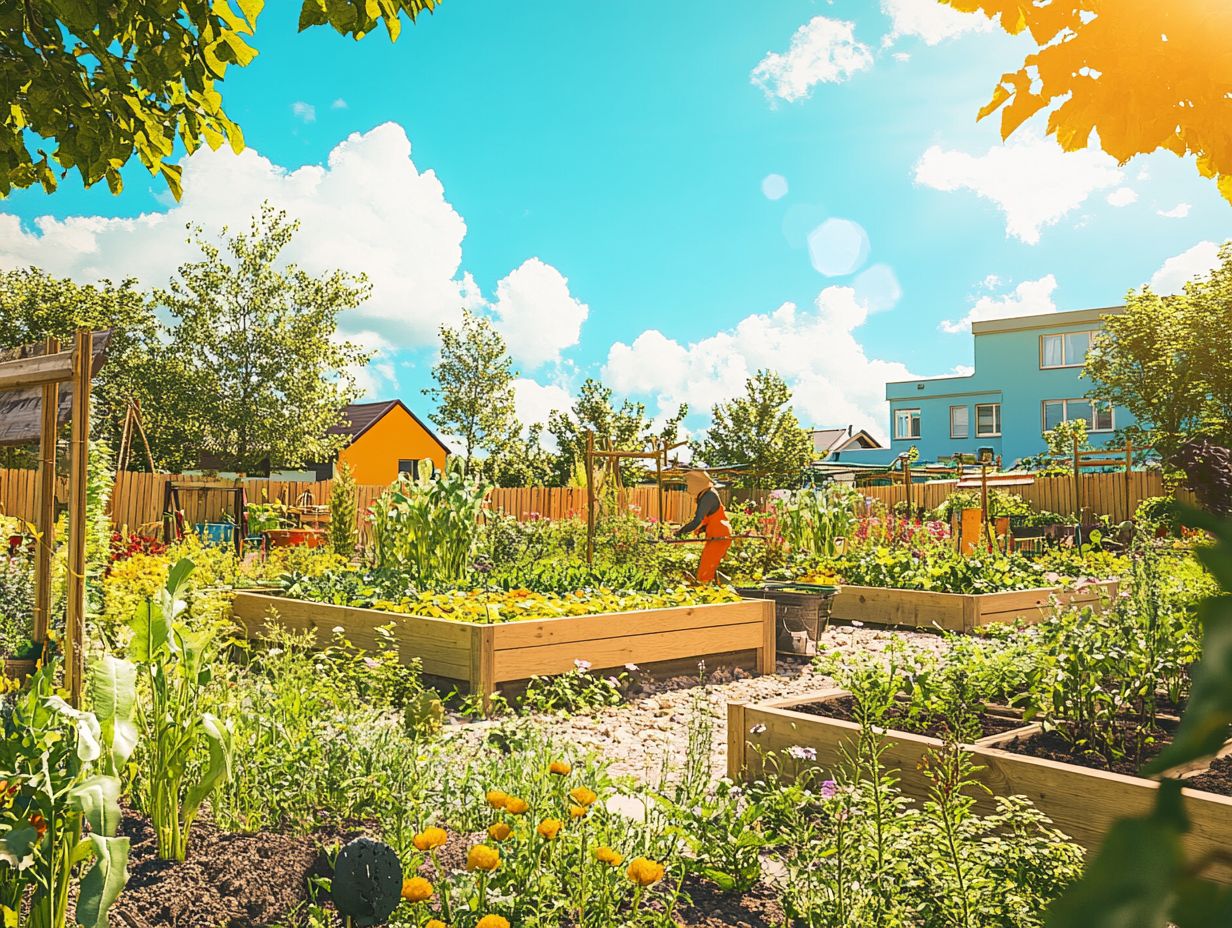
- Expand your knowledge on permaculture principles and design through books, online courses, and webinars.
- Gain hands-on experience and certification through local groups, workshops, and programs.
- Utilize tools such as design manuals, software, and consultations to apply permaculture in various settings and benefit the environment and communities.
1. Books on Permaculture Principles and Design
Books on permaculture principles and design stand as invaluable resources for anyone like you who is drawn to sustainable living. For a great starting point, check out the top books on permaculture gardening. They offer a comprehensive foundation in the ethics, techniques, and practices that contribute to restoring the environment and community resilience.
Through these texts, you ll uncover vital concepts such as closed-loop systems, biodiversity, and farming that improves the land. The teachings emphasize the interconnectedness of ecosystems and the importance of mindful stewardship of resources, illustrating how your individual actions can ripple through your community.
The clarity with which key authors present their ideas gives you the power to envision tangible applications, transforming theory into practical solutions for food production, waste management, and resource conservation. As you immerse yourself in this literature, the principles not only inspire your personal growth but also foster a collective movement toward a more sustainable and self-reliant society.
2. Online Courses and Webinars
Online courses and webinars offer you accessible pathways to delve into the world of permaculture, making it easy for individuals from all walks of life to explore sustainable living and ecological practices right from the comfort of their homes.
Platforms like the Permaculture Design Course Online and the Regenerative Agriculture Association cater to your unique skill level with structured modules that range from foundational concepts in soil health to advanced design strategies. You ll find engaging video lectures, interactive workshops, and hands-on projects that keep the learning experience dynamic and enriching.
Learning from renowned instructors like Geoff Lawton and esteemed organizations such as The Permaculture Institute ensures you re gaining insights from some of the best in the field. These digital classrooms encourage community interaction, allowing you to share experiences, ask questions, and collaborate on projects enhancing your journey and fostering a sense of belonging among fellow aspiring permaculturists.
3. Permaculture Design Certification Programs
Permaculture design certification programs offer you a structured pathway to acquire essential skills and knowledge that give you the power to implement sustainable practices while making a positive impact in your community.
These programs cover various subjects, including ecological principles, landscape design, soil health, and water management techniques, allowing you to gain a profound understanding of interconnected ecosystems. You’ll be introduced to core permaculture ethics care for the earth, care for people, and fair share while actively engaging in hands-on design processes that enable you to craft your unique projects.
By earning your certification, you significantly enhance your professional credentials, opening doors to new career opportunities and fostering ongoing growth in your permaculture journey. This not only enriches your personal development but also contributes to a more sustainable future for the communities you serve.
4. Permaculture Blogs and Websites
Permaculture blogs and websites serve as vibrant platforms for you to explore knowledge, resources, and experiences centered around sustainable living and environmentally friendly design techniques. For those interested in enhancing their understanding, the top 5 principles for effective permaculture design can enrich your educational journey, whether you’re an enthusiastic novice or a seasoned practitioner.
Among these influential sites, platforms like Permaculture News and the Permaculture Institute truly shine. These sites provide extensive libraries of how-to guides, including the top 5 permaculture design strategies for beginners, that empower you to implement permaculture principles in your own unique setting.
For instance, detailed case studies on successful community gardens offer you invaluable insights, showcasing real-world applications of permaculture techniques. You ll find many authors sharing personal narratives and community stories that highlight the challenges they’ve faced and the solutions they’ve discovered.
This creates a sense of connection and inspiration that resonates deeply with you. This collaborative exchange not only enhances your education but also ignites a genuine passion for sustainable living strategies.
5. Podcasts and Videos
Podcasts and videos have become captivating channels for sharing permaculture knowledge, enabling you to absorb sustainable practices and principles through engaging storytelling and visual demonstrations.
This dynamic shift opens up enriching avenues for learning that are both entertaining and informative. Renowned hosts, like the seasoned farmer and educator Jeff Lawton, delve into topics ranging from soil health to water conservation techniques. Others, such as Nicole Masters, concentrate on regenerative agriculture principles.
The interactive nature of these formats invites your participation, sparking discussions in online forums and social media platforms. This sense of community unites permaculture enthusiasts like you, allowing for the sharing of experiences, asking of questions, and collaboration on sustainable projects.
As this trend continues to flourish, it not only enhances your knowledge but also broadens the reach of permaculture philosophy.
6. Local Permaculture Groups and Workshops
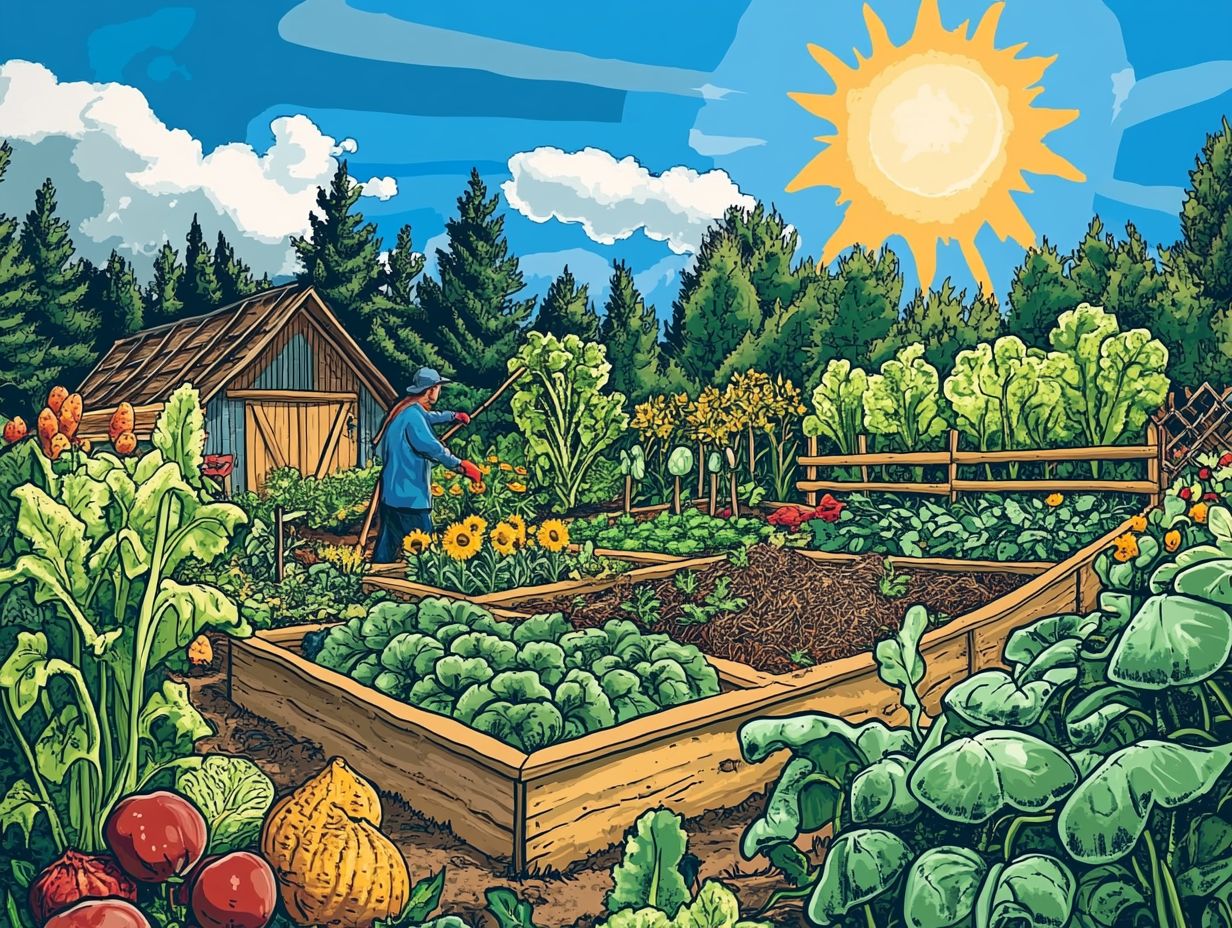
Join local permaculture groups and workshops for amazing hands-on experiences! Here, you can apply sustainable practices in real-world settings while connecting with others who share your values.
By immersing yourself in these communities, you deepen your understanding of eco-friendly practices and cultivate relationships that open doors to invaluable networking opportunities. Whether you re planting community gardens, attending seed swaps, or diving into soil health workshops, you ll acquire practical skills that are essential for both personal and professional projects.
For example, collaborative efforts focused on rainwater harvesting or organic pest management allow you to learn from seasoned practitioners. These experiences enhance your grasp and application of permaculture principles.
They not only spark innovation but also inspire you to adopt sustainable techniques in your own life and contribute positively to the wider community.
7. Permaculture Design Manuals and Guides
Permaculture design manuals and guides are invaluable references for you as a practitioner. They offer practical techniques, implementation frameworks, and deep insights into design processes that champion sustainability and ecological integrity, including details on the best online courses for permaculture.
These resources explore a range of methodologies, including zone planning (ways to organize and manage land effectively) and sector analysis (ways to organize and manage land effectively), allowing you to thoughtfully evaluate your landscapes.
With clear illustrations and compelling case studies, they illustrate how to incorporate native plant species and create resilient ecosystems, enhancing your understanding of the interconnectedness of natural systems.
You can harness this knowledge to craft productive environments that satisfy human needs while safeguarding local biodiversity. In doing so, you have the power to cultivate landscapes that flourish in harmony with the surrounding ecosystem, showcasing the significant impact of informed design practices.
8. Permaculture Design Conferences and Events
Ever wanted to connect with passionate permaculture enthusiasts? Conferences could be your starting point! Permaculture design conferences and events bring together a vibrant community of enthusiasts and educators to share ideas, showcase innovative projects, and build meaningful connections in sustainable living.
At these gatherings, you can expect a rich variety of focus areas, from hands-on workshops in organic gardening to in-depth discussions on regenerative agriculture techniques. Keynote speakers will inspire you with their experiences and insights, sparking passion and creativity.
While educational sessions cover both theoretical frameworks and practical applications, don t underestimate the power of networking. Collaborating with like-minded individuals enhances learning opportunities and drives the shared mission of sustainability forward.
9. Permaculture Design Software and Apps
Permaculture design software and apps are great tools to help you plan and visualize sustainable landscapes, allowing you to effectively apply permaculture techniques.
These tools often include features like site mapping, climate analysis, and plant selection databases, allowing you to create personalized designs that harmonize with your unique environmental conditions. Many popular applications feature an integrated database brimming with insights on companion planting, soil health, and water management strategies.
By harnessing these tools, you can optimize land use, seamlessly integrating renewable resources, enhancing biodiversity, and promoting vital natural benefits like clean air and water. Ultimately, modern permaculture tools are essential for transforming designs into practical realities, paving the way for a more sustainable approach to agriculture.
10. Permaculture Design Consultations and Mentoring
Consultations and mentoring in permaculture design provide invaluable support as you refine your skills and implement sustainable practices.
Experts provide personalized guidance, enabling you to gain a deeper understanding of detailed systems and design principles that can truly transform your landscape. Many new permaculturists achieve breakthroughs after engaging with seasoned professionals who share their knowledge and practical strategies for success.
For instance, one community garden project witnessed a remarkable 50% increase in yield after workshops with a local expert, illustrating the tangible benefits of mentorship. Similarly, numerous testimonials highlight how learning from experienced practitioners boosts your confidence and enhances your problem-solving abilities.
What Is Permaculture and Why Is It Important?
Understand the core principles of permaculture Earth care, people care, and fair share. This approach focuses on designing agricultural systems, landscapes, and communities through a seamless integration of ecological principles and ethical considerations. It’s essential for addressing environmental issues and building resilience.
By developing productive systems, you not only restore but also enhance the environment while catering to the needs of both current and future generations.
This framework breaks away from traditional harmful practices and draws inspiration from agricultural wisdom and Indigenous knowledge. Emerging in the late 20th century as a response to rising concerns about ecological degradation and social inequality, permaculture has evolved into a global movement advocating for sustainable resource management.
In today s world, its relevance is amplified by the pressing need for innovative solutions to climate change, food security, and community development. By embracing permaculture techniques, you can help cultivate resilience, foster biodiversity, and strengthen social connections, ultimately creating a more harmonious relationship between people and the planet.
How Can Permaculture Design Be Applied in Different Settings?
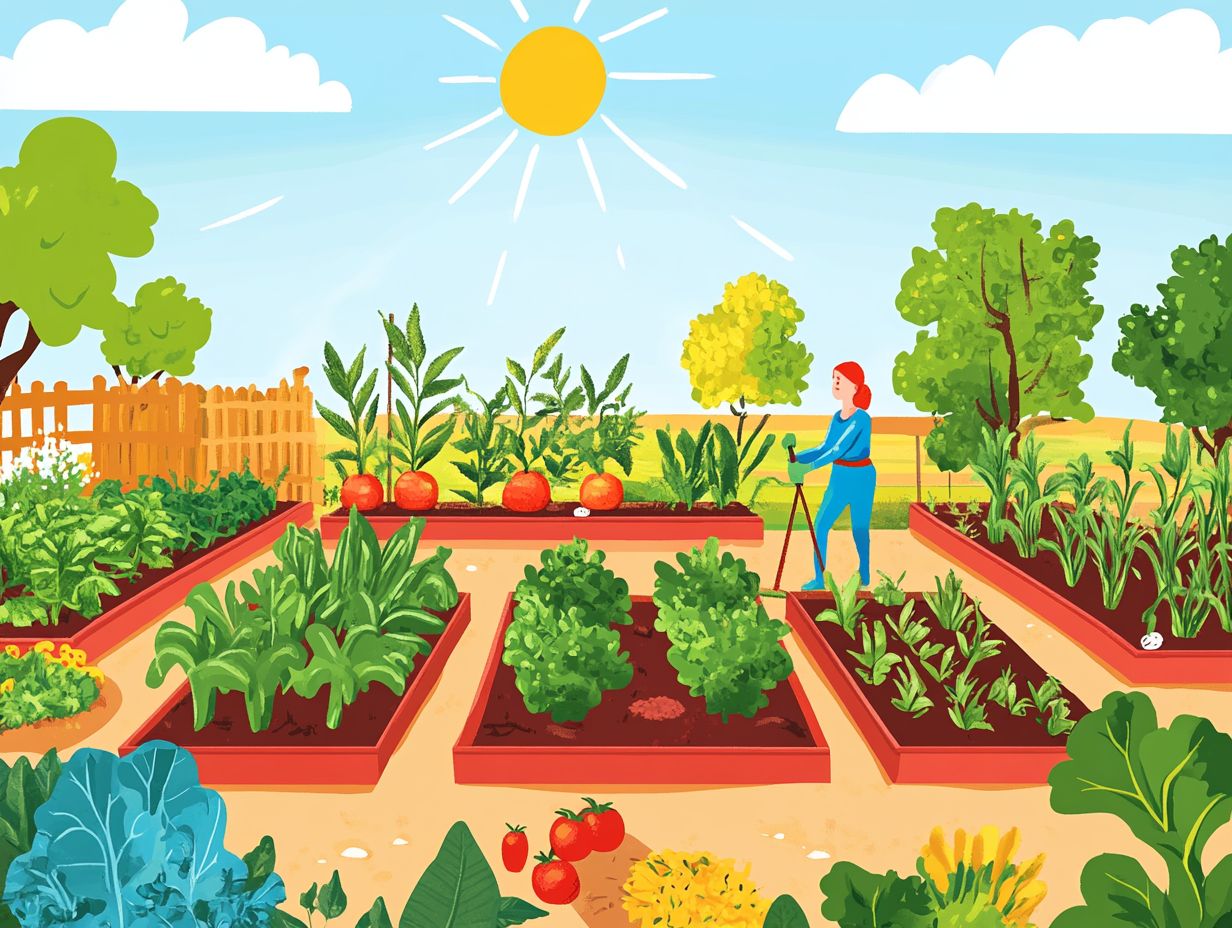
Permaculture design offers you the flexibility to apply its principles in various settings, from bustling urban environments to serene rural landscapes and even educational institutions. Techniques can be adapted to meet specific ecological and community needs.
In an urban context, for example, you might find community gardens thriving through the clever use of vertical gardening and rainwater harvesting systems. These innovations maximize limited space and foster local food production.
Rural farmers embrace whole farm management and agroforestry (mixing agriculture with forestry) practices, enhancing soil health and biodiversity. This proves that permaculture is far from a one-size-fits-all solution.
Educational institutions also recognize the value of these principles, weaving them into their curricula to teach sustainability and ecological responsibility. This inspires a new generation to actively nurture their environment.
Each example highlights the remarkable adaptability of permaculture, showcasing its ability to tailor fundamental design principles to address a diverse array of local challenges.
What Are the Key Ethics and Principles of Permaculture?
The key ethics and principles of permaculture emphasize nurturing positive relationships between individuals and their environment, ensuring sustainability through practices that prioritize ecological health, social equity, and economic viability.
Earth care, people care, and fair share form the bedrock of decision-making within various permaculture initiatives. By highlighting the importance of nurturing the planet, you are encouraged to adopt methods that regenerate ecosystems, promote biodiversity, and minimize waste.
People care closely intertwines with community building, recognizing the vital role of supporting individuals and fostering inclusive environments where everyone can thrive. Fair share advocates for equitable distribution of resources, urging you to consider how benefits and responsibilities are shared among participants.
Together, these principles inform your design choices and strategies in permaculture projects, ensuring they remain holistic and impactful.
How Can Permaculture Design Benefit the Environment and Communities?
Permaculture design presents a wealth of benefits for both the environment and communities, enriching biodiversity, enhancing ecological resilience, and fostering a sense of community through shared sustainable practices.
By improving soil health through composting and crop rotation, you can start enriching the land today! This allows it to absorb water and nutrients more effectively.
Implementing water conservation techniques, such as rainwater harvesting and swales, helps you manage runoff and sustain the local ecosystem, ultimately easing the burden on municipal water sources.
Restoring habitats paves the way for the resurgence of local wildlife, creating a harmonious environment. These exciting practices boost our ecosystems and empower communities!
These actions offer educational opportunities that promote sustainability and collaboration. In doing so, you help reinforce a culture of stewardship and responsibility toward our planet.
What Are the Different Approaches to Permaculture Design?
Different approaches to permaculture design highlight a range of techniques, systems, and frameworks, empowering you to create tailored solutions that cater to local ecological conditions and specific community needs.
This multifaceted perspective encourages you to embrace creative problem-solving and adaptability. You ll find inspiration in various methodologies, from agroecology to biophilic design, all of which advocate for sustainable living.
By fostering an environment where flexibility reigns and innovation flourishes, you can develop unique strategies that resonate with your ecological context. This approach emphasizes observation and responsiveness to change, enhancing biodiversity while also strengthening community engagement.
Join hands with your neighbors to realize your shared vision of sustainability!
Dive into the Permaculture Community!
Join the permaculture community and discover a fulfilling journey filled with education, networking, and hands-on learning in sustainable practices. Your involvement benefits not only your personal growth but also the collective well-being of the community.
Start by attending local workshops to acquire practical skills and knowledge from seasoned practitioners. Join community groups to forge friendships and build a support system around shared interests.
Engage in online forums to exchange ideas and seek advice. These platforms make a vast wealth of information accessible at your convenience. By emphasizing collaboration and shared learning, you enrich the community, allowing everyone to contribute unique perspectives and solutions to sustainability challenges.
Frequently Asked Questions
What are the top 10 resources for learning permaculture design?
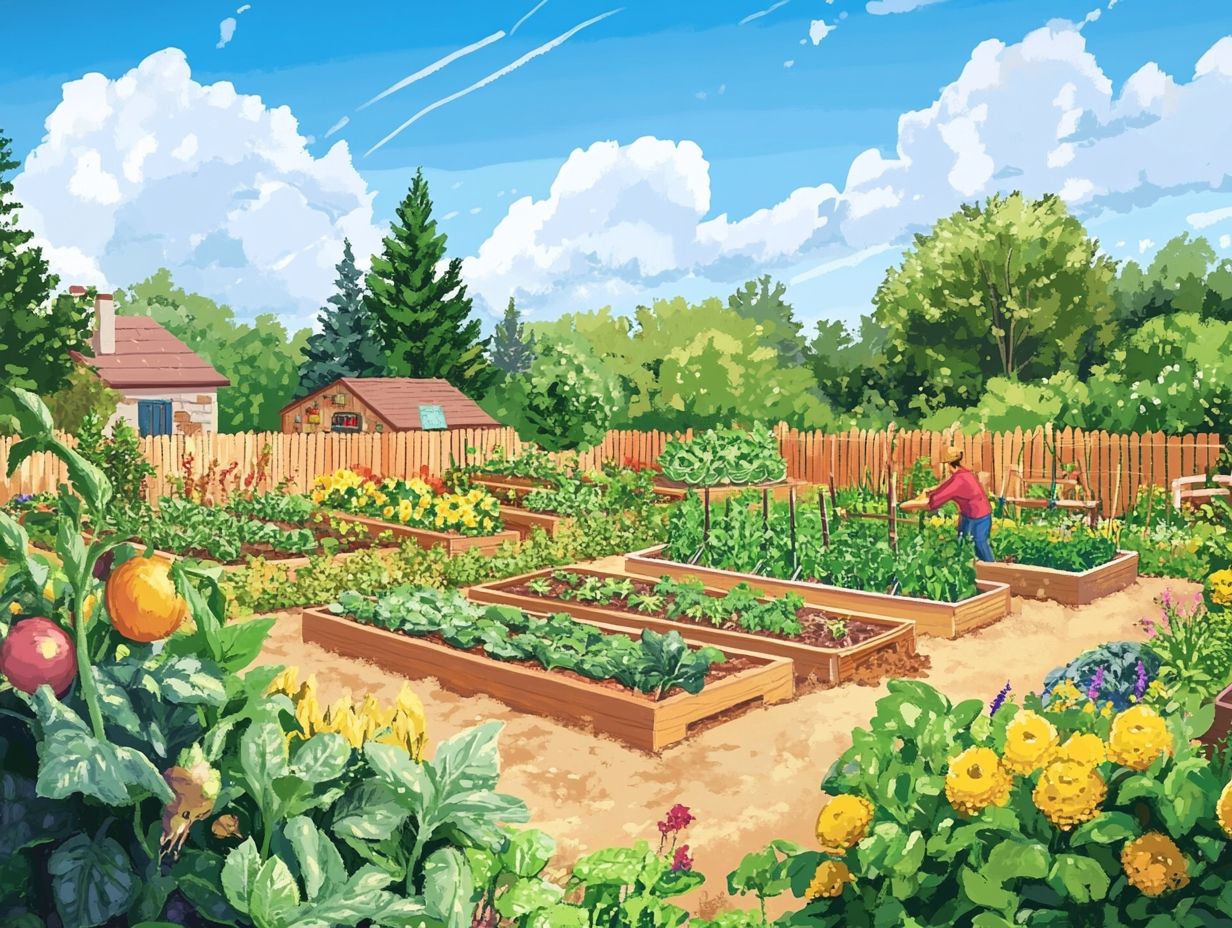
- Permaculture Principles: A Beginner’s Guide by David Holmgren A great starting point for those new to permaculture, covering fundamental principles and practices.
- Permaculture Design: A Step-by-Step Guide by Aranya This guide walks you through designing a permaculture system, from assessment to implementation.
- Online Permaculture Course by Geoff Lawton Offers in-depth training from a world-renowned expert, covering all aspects of permaculture.
- Permaculture: A Designer’s Manual by Bill Mollison Delves into the philosophy and strategies behind permaculture design, highlighting ethical care.
- Permaculture Design Certificate Course A hands-on course that teaches you how to create sustainable gardens with practical applications.
- Permaculture Magazine A print and digital magazine rich in information on permaculture design and ecological practices.
- Permaculture Voices Podcast Features interviews with practitioners and educators, offering insights on community care and sustainable methods.
- Regenerative Agriculture Podcast Explores the link between permaculture and regenerative agriculture, featuring expert interviews.
- Permaculture Research Institute Provides articles, videos, and workshops to help you learn about permaculture techniques.
- Permaculture Association A UK-based organization offering information and events for those interested in permaculture design.
How can I learn more about the principles of permaculture design and sustainable practices?
Explore resources such as “Permaculture Principles: A Beginner’s Guide” or “Permaculture: A Designer’s Manual.” You can also check out the best resources for permaculture educators, take online courses, attend workshops on sustainable gardening, or listen to podcasts focused on permaculture principles.
What is the best way to gain hands-on experience with permaculture design and ecological systems?
The best way to gain hands-on experience is to enroll in a Permaculture Design Certificate course. These courses blend classroom learning with practical application, allowing you to work on real projects and gain valuable experience in sustainable agriculture.
Start your permaculture journey today by signing up for a local workshop!
Are there free resources to learn permaculture design and sustainable living?
Yes, many free resources are available for learning permaculture design. You can find articles, videos, and podcasts that focus on sustainable living and ecological practices, including the best resources for learning permaculture.
Look for free workshops and events hosted by permaculture organizations. Joining online communities can also help you connect with others and learn from their gardening experiences.
What should I consider when choosing a permaculture design course?
When selecting a permaculture design course, look for a reputable instructor or organization that has experience in permaculture and sustainable practices. Check the course curriculum for hands-on experience with restoration techniques to ensure it aligns with your learning goals.
Reading reviews and testimonials from past students can provide valuable insights into their experiences.
Can I use permaculture design principles in my urban or suburban property?
Absolutely! You can apply permaculture design principles in urban and suburban properties. This approach focuses on creating sustainable systems, and it works in any setting.
With creativity and adaptation, you can implement permaculture practices in your backyard, balcony, or community garden. This not only enhances your space but also fosters community relationships and ecological understanding.

